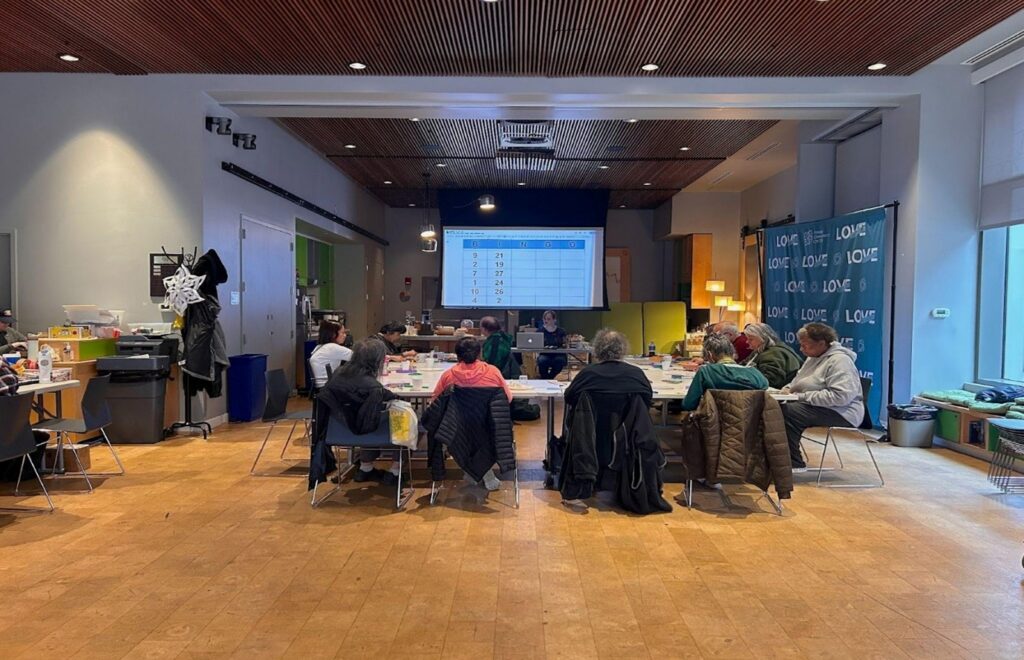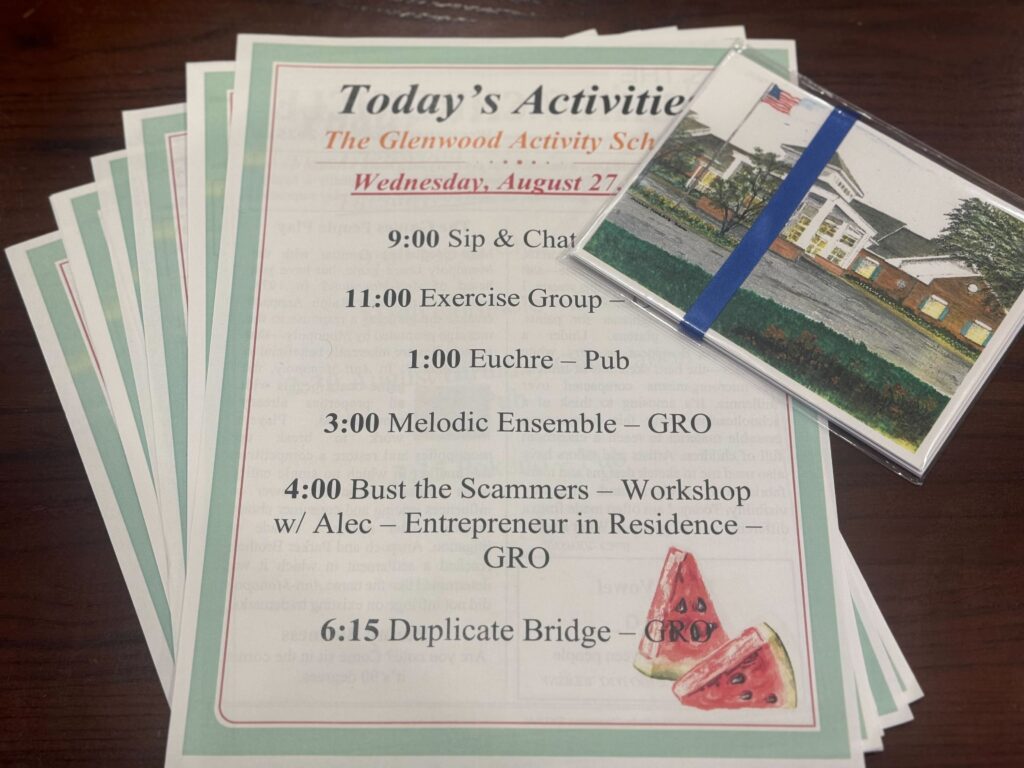Abstract
For Black elders, community is more than a support system; it’s a source of connection and well-being. As the world becomes increasingly digital, artificial intelligence (AI) is emerging as an important tool with the capacity to deepen or disrupt these connections. The Aging While Black movement recognizes AI’s potential to map relationships, facilitate collaboration, and amplify voices in Black communities. But how do we ensure that AI serves as a bridge rather than a barrier? By embracing the principles of network weaving, this article explores how AI can be leveraged to strengthen communities while honoring cultural traditions and lived experiences.
Key Words
Black elders, community, connection, AI, Aging While Black, network weaving
Camilla Foust, a Black elder in her 60s living in Durham, North Carolina’s Southside neighborhood, exemplifies the vital role of community in aging while Black. She moved into the area with her parents in the late 1970s and has become a pillar of her neighborhood. Foust is deeply committed to preserving the neighborhood’s character and supporting long-time residents as gentrification reshapes her childhood community.
She maintains a list of older homeowners and ensures they are aware of programs to help them stay in their homes. “I try to keep contact with them to make sure that they know about programs to make sure they can stay in their homes, they can afford the taxes,” she said.
Despite battling her own challenges, including the need for hip surgery, Foust continues to volunteer and advocate for her community, working with young people and encouraging neighborhood investment. She is extremely concerned that many of her new neighbors are transient, often selling their homes within a few years of purchase. For her, this poses a significant challenge to building meaningful community connections.
Additionally, Foust experiences increasing difficulty in remaining actively engaged. Many meetings, activities, and resources she previously navigated in person are now predominantly online. While adapting to new technologies like smartphones, she struggles with more advanced features, echoing the digital barriers many Black elders face.
Aging While Black exists to address these realities. We believe building a strong network of like-minded organizations and individuals is crucial. The Network Weaving model developed by Valdis Krebs and June Holley guides our efforts (Krebs & Holley, 2002). For Black elders like Foust, persistent barriers to healthcare, economic stability, and social connections make a strong, interwoven network essential.
AI’s ability to analyze, predict, and connect presents a new opportunity in community-building. The strategic deployment of AI can ensure elders remain at the heart of these networks. Organizations can use AI to analyze the frequency and quality of engagement on platforms like community forums, social media, and neighborhood-focused apps.
Understanding the Network Landscape
Across the United States, local leaders gather to discuss ways to strengthen the interaction between important anchors and the people they serve. One consistent challenge is the absence of effective connections between elders and those important to their well-being.
AI holds promise to bridge these gaps. AI-driven data analytics, properly used, can assess social networks to highlight strong ties, weak links, and isolated individuals in communities. Machine learning models can reveal underserved populations and ensure equitable access to important resources. Additionally, AI models can forecast future needs, allowing the development and execution of proactive strategies.
‘AI’s ability to analyze, predict, and connect
presents a new
opportunity in community-building.’
For instance, an AI-powered analysis of community engagement data could generate a visual map, highlighting areas where outreach efforts are most needed. Such data comes from existing sources like social media interactions, community surveys, attendance records from local events, or online discussion groups where community members take part. The map could be a digital dashboard that is accessible on computers or mobile devices and clearly indicates areas of strong or weak engagement. With this knowledge, organizations can begin to act with intentionality and laser-like focus, rather than the one-size-fits-all broadband strategies too frequently used.
Aging While Black actively engages with organizations across the aging ecosystem, including health systems, community-based groups, and advocacy networks. By creating platforms for connection, collaboration, and sharing best practices, we seek to ensure local leaders and institutions are equipped to meet the unique needs of Black elders. AI-driven tools enhance outreach strategies, illuminate connections, identify gaps, and facilitate data-informed decision-making. This intentional focus on organizational partnerships strengthens the broader infrastructure supporting Black elders.
Facilitating Meaningful Connections
Building upon this understanding of the network landscape, the next essential step is advancing strong connections in the community. While AI-driven data analytics assist in mapping the network, they can also play a key role in accelerating connections and collaboration.
Addressing the digital limitations and isolation faced by elders like Foust, AI-powered recommendation systems can suggest introductions, much like social media algorithms connect users with common interests. Foust can use AI to knock down technological barriers, as AI systems can create tools, identify resources, and recommend ways to distribute them.
This means an AI system could connect Foust with the next generation of community activists, allowing them to benefit from her experience and she to be energized by their passion. Foust would sign up or opt-in through a community-based app, local organization, senior center, or social media platform designed for elders. The AI would then use the details she provides to suggest meaningful connections.
Furthermore, AI-driven communication tools, such as natural language processing (NLP), could overcome communication barriers, enhancing conversations between different generations and across geographic distances. This technology could help elders like Foust stay connected with and engaged in their changing communities, even as new residents move in and out.
In addition, AI-powered project management platforms could coordinate meetings, track relevant initiatives, and bolster collective action, strengthening the overall impact of community efforts. For community pillars like Foust, who curate lists of homeowners and programs, these tools could significantly enhance their ability to maximize the impact of vital information.
By leveraging these technologies, we can create a more interconnected and empowered community, ensuring that Black elders remain at the heart of these networks rather than at the margins.
Empowering Network Members with AI
AI has the potential to reinforce Aging While Black’s mission by providing individualized resources and elevating authentic community voices. AI-driven platforms can curate relevant capacity-building programs, advocacy opportunities, and funding sources. Tools that analyze public opinion can evaluate and elevate community priorities, ensuring initiatives reflect the lived experiences of Black elders.
An AI-driven storytelling initiative could help Black elders document their histories and experiences, preserving their wisdom for future generations. These approaches empower individuals and strengthen the collective voice of the community, creating more empowered and influential networks.
Ensuring Culturally Responsive AI
Empowering Black elders through technology requires careful attention to cultural components in AI development. The historical and social circumstances surrounding Black aging are unique and consequential. Any proposed solutions must be grounded in these experiences to be truly effective and embraced by the community.
Ben Moultrie, managing partner at Spock Ventures, emphasizes the importance of having Black founders in tech startups: “Affinities—whether racial, gender, social, or cultural—strongly influence behaviors and decision-making. Black founders are more likely to build diverse teams and pursue broader, more diverse customer segments.”
Brannon Peterkin’s story illustrates the potential of culturally responsive technology. As the founder of finish’d, a platform that provides on-demand access to essential services and caregivers, Peterkin was inspired by his family’s struggles with existing technology. “They would tell me it’s too hard, or there are too many steps,” he said. His solution centers older adult experiences, making technology simpler and more intuitive, and demonstrating the importance of culturally informed design.
‘Tools that analyze public opinion can evaluate and elevate community priorities, ensuring initiatives reflect the lived experiences of Black elders.’
To effectively serve diverse communities, AI systems must be developed with cultural awareness and inclusivity at their core. This means ensuring AI models are trained on diverse datasets to avoid reinforcing stereotypes and biases. It also involves designing AI tools that reflect the traditions, values, and priorities of Black communities. Crucially, engaging Black elders in AI development is essential to meet real-world needs and create solutions that resonate with their lived experiences.
By prioritizing cultural responsiveness in AI development, we can create technologies that not only serve Black elders more effectively but also honor and amplify their voices and experiences. This approach ensures that AI becomes a tool for empowerment and connection, rather than a source of further digital divide or cultural disconnect.
A Vision for AI-Driven Community Networks
Integrating AI into community-building efforts offers a transformative path toward more impactful and culturally aligned networks for Black elders. To maximize its potential and ensure that AI is a catalyst for systemic transformation, several key actions are needed:
- Champion diverse representation in AI development.
- Implement AI skills mastery programs for Black elders.
- Develop partnerships between community organizations, tech firms, and Historically Black Colleges and Universities.
- Establish ethical guidelines for AI use in community-building with community input.
- Continuously evaluate and refine AI systems based on community feedback and changing needs.
By aligning AI’s capabilities with the principles of network weaving and cultural sensitivity, Aging While Black seeks to build a future where Black elders are empowered, celebrated, and deeply connected. This approach demonstrates how AI, when ethically and intentionally deployed, can enhance community networks, ensuring Black elders remain central to conversations on aging and racial equity.
As we move forward, let’s embrace the potential of AI to create more inclusive, vibrant communities for all generations. By ensuring the full participation of Black elders and founders in technology development, we increase the likelihood of solutions that align with the cultural sensitivities of the communities they serve, enhancing their overall well-being and preserving invaluable wisdom for future generations.
After all, if AI can predict trends in economics and health, surely it can help keep Camilla Foust engaged in the neighborhood she helped to build.
Raymond A. Jetson is the founder of Aging While Black.
Photo credit: VideoFlow
References
Krebs, V., & Holley, J. (2002–2006). Building smart communities through network weaving. http://www.orgnet.com/BuildingNetworks.pdf













